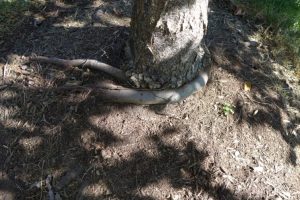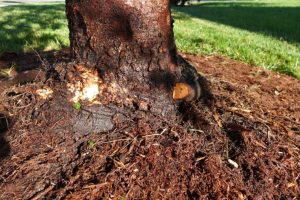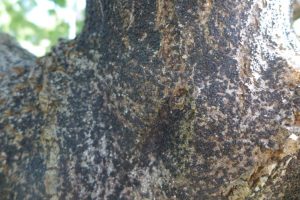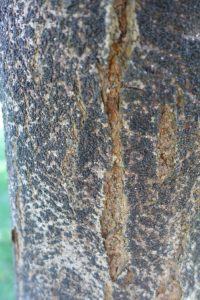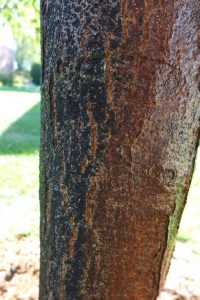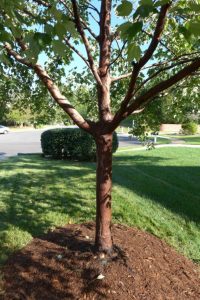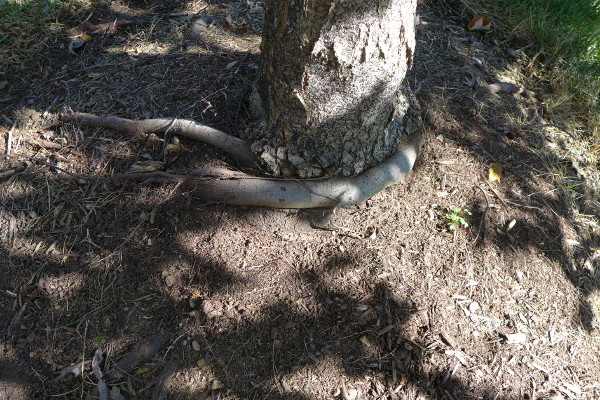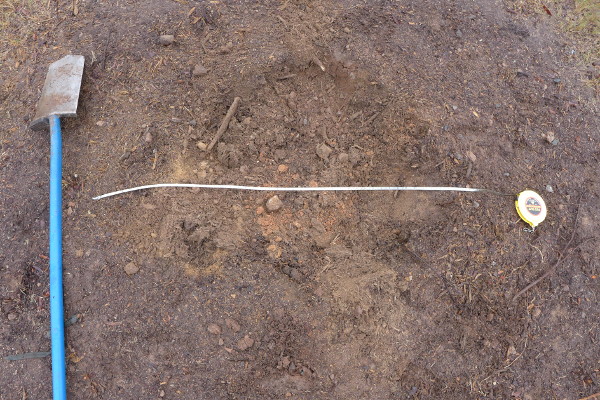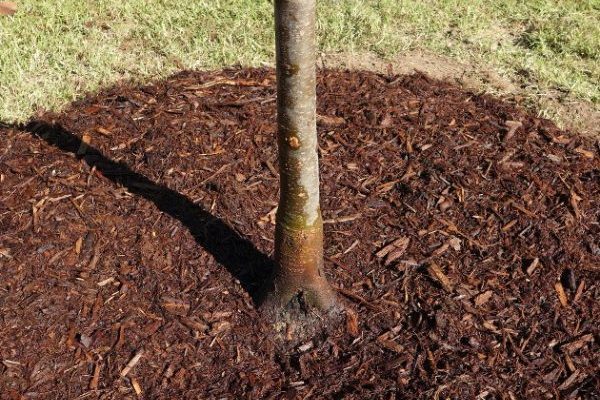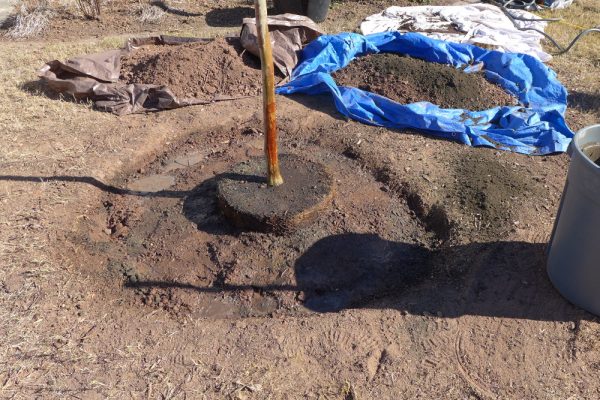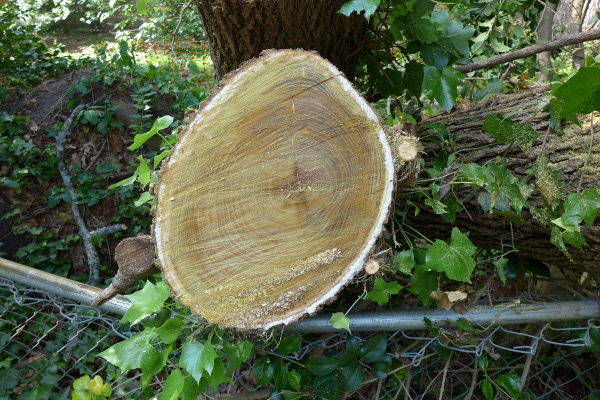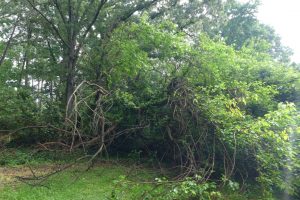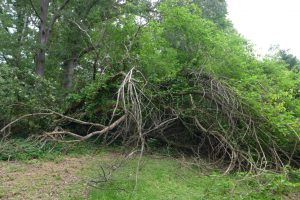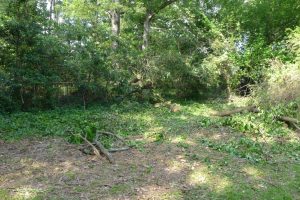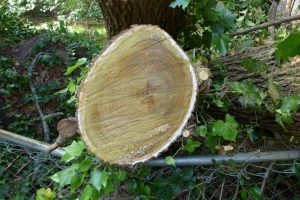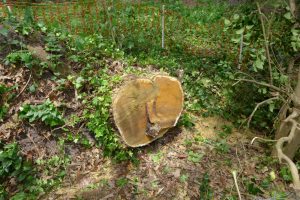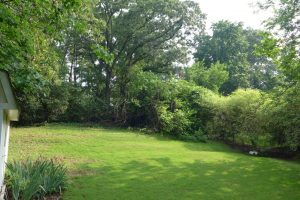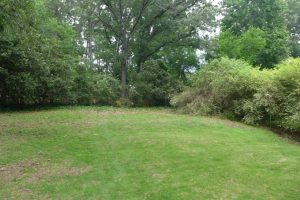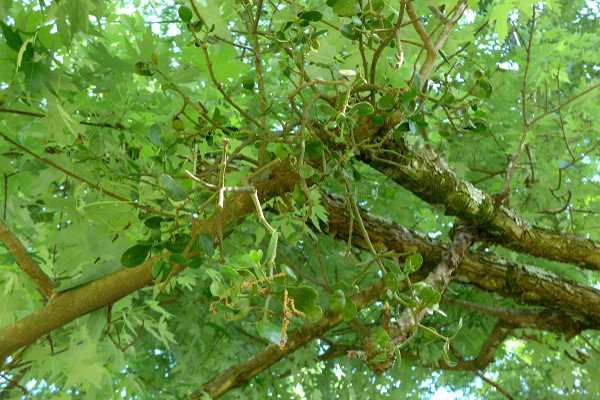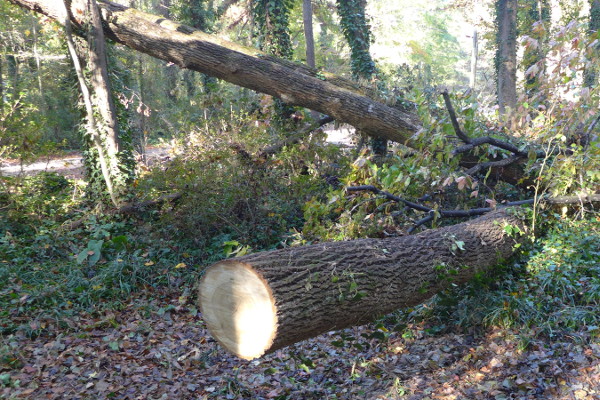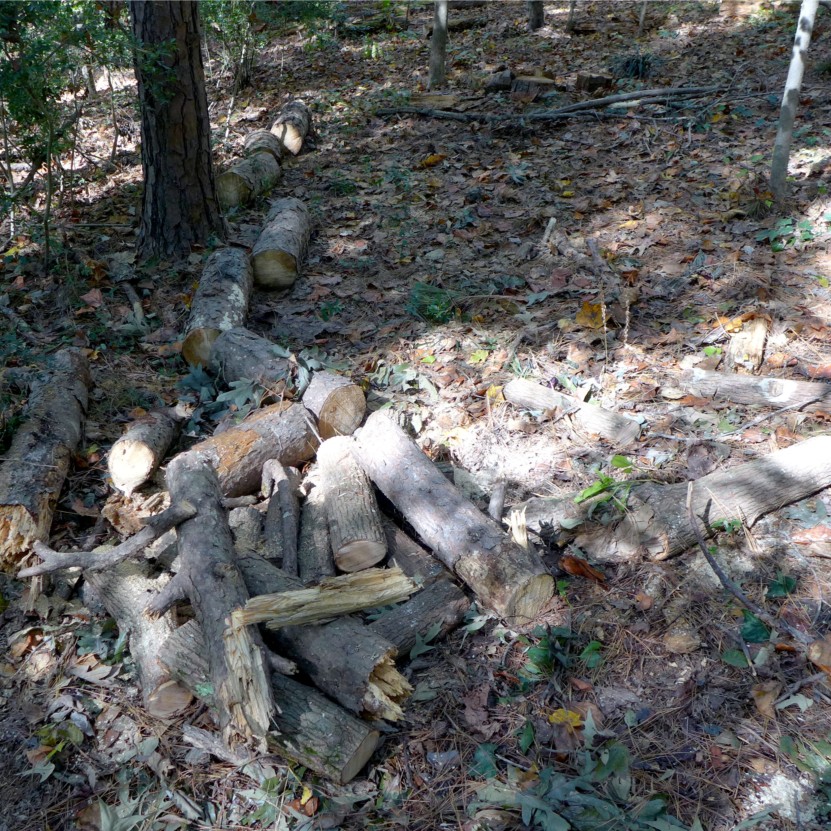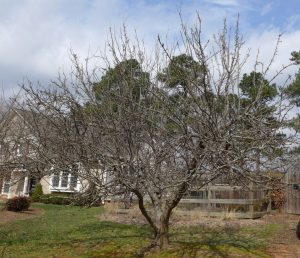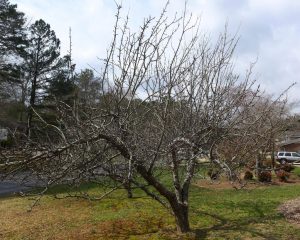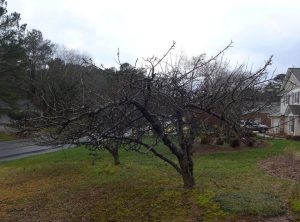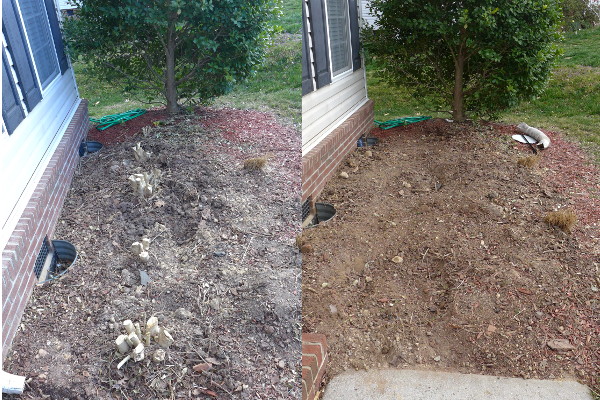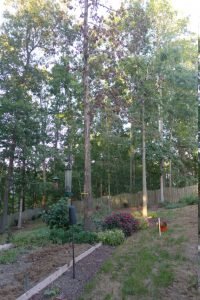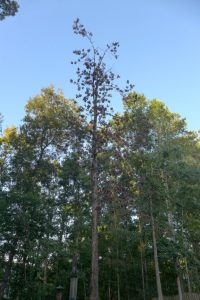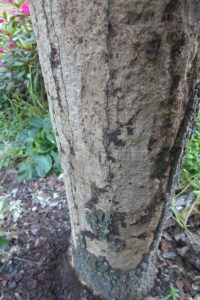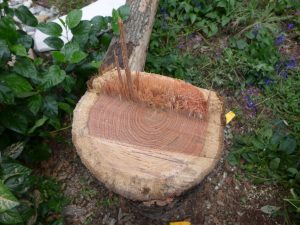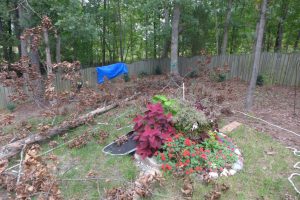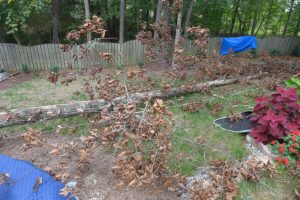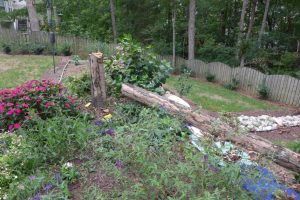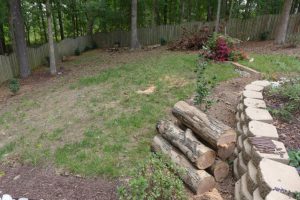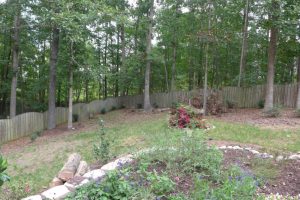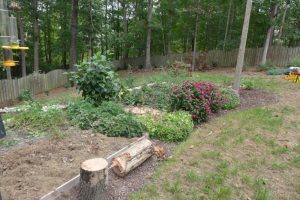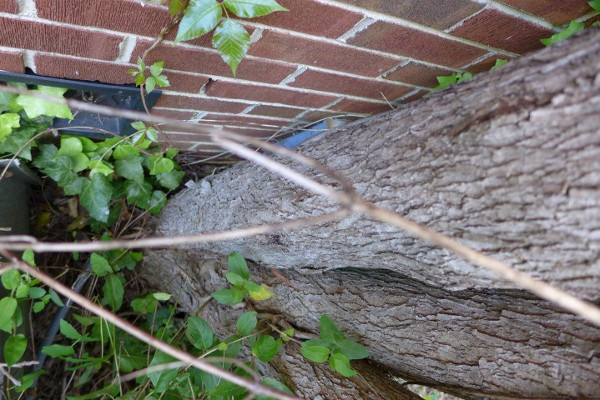UPDATED: November 30th, 2017
My name is Paul Nystrom, ISA-certified Arborist and owner of Just Small Trees. I’ve put together a plan and pricing to replace the trees that have been removed in the Carolina Preserve development. The goal is to have a new tree planted in accordance with arborist standards while leaving a clean site. All you’ll have to do is water.
I have replaced 3 trees in Carolina Preserve as of November 30th, 2017.
While new trees are generally recommended to be planted 3 feet to the side of a removed tree, this is a guideline suited for smaller trees with containers under 5 gallons. Because the new trees will be in 15-25 gallon pots, the new holes will be almost 5 feet in diameter. Due to the restrictions in place by the close location of electric, water, sewer, and communication lines, I’ll use hand tools to remove the remains of the stump and roots as necessary. The new tree will sit on soil, not on top of the old tree. Depending on how much of the old tree is left in the ground, the new tree can be planted between 0 and 3 feet of the old tree’s location. In most cases, planting near to the old tree will give the most room for your tree as it gets older and larger. Trees moved closer to utilities could suffer if those utilities need to be repaired in the future and the tree roots are cut.
In the end, extra soil (a mix of certified compost and NC native topsoil) will be brought in and mixed with the clay soil to make up for the removed material. The extra hand digging work and the extra materials is why the price will be higher than my basic tree planting price.
If you decide to use my service, please read:
- Just Small Trees standard waiver form
- Just Small Trees standard tree planting information page
I’ll confirm the position of the new tree with you and then I’ll take care of everything else from preparing the planting hole to calling 811 to cleaning up.
I can offer tree planting until the ground gets close to freezing, probably mid-December. After that date, the best practice would be to reserve the tree you want and then plant it in earliest Spring. This way the nursery can take proper care of the plant when the tree isn’t growing.
| SERVICE |
PRICE |
WHEN |
| Remove large wood chip piles |
$50.00 |
Done anytime |
| Tree hole preparation |
included with planting service |
Done anytime, I will call 811 first |
| Planting service w/ 1 year warranty |
$200.00 most locations
$150.00 locations with minimal stump remains |
Thru mid-December or after March 1st |
| Tree itself |
$130-$260 |
n/a |
Total price = Tree price + Planting service price
AVAILABLE TREES – All Single Stem. Prices are for TREE ONLY:
- ‘Brandywine’ Maple -Not available in containers in required HOA height/caliper
- ‘Okame’ Cherry, 25 gallon, $218.00
- Dogwoods – Not available in containers in required HOA height/caliper
- ‘Red Rocket’ Crape Myrtle – Not available in containers in required HOA height/caliper/stem
- ‘Muskogee’ Crape Myrtle, 25 gallon, $226.00
- ‘Natchez’ Crape Myrtle, 25 gallon, $226.00
- ‘Natchez’ Crape Myrtle, 15 gallon, $208.00 – less expensive 15 gallon from a different nursery may be available.
- ‘Tuscarora’ Crape Myrtle, 15 gallon, $208.00- less expensive 15 gallon from a different nursery may be available.
- ‘Biloxi’ Crape Myrtle, 25 gallon, $226.00
- Fringetree – American version not available in containers in required HOA height/caliper, Chinese version is available
If there is another tree variety you’d like, please contact me for availability and price.
HOA Requirements – I cannot take responsibility for meeting HOA requirements, but I will source trees to the requirements you give me or tell you if none are available.
Payment – As normal for my company, payment is due upon job completion. If I’m unable to plant your tree before mid-December but I’ve completed preparation work, I’d like to ask for 25% payment for that work and to reserve your tree for 2018.
I want to put in great trees that have great long term prospects. Please let me know if you have any questions or comments. My email is paul@justsmalltrees.com or call 919-521-7651.

